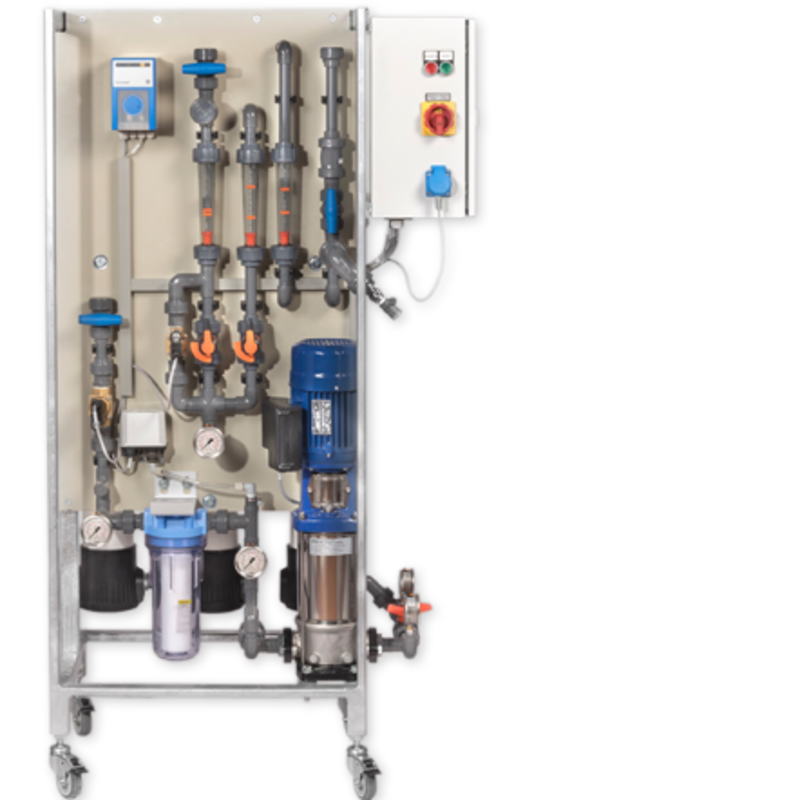W.E.T.nano
Circuit treatment with nanofiltration

Application of Nanofiltration in pool water treatment
Limit values are adjusted, new ones are published. General conditions and operating costs are changing.
Nanofiltration now offers the possibility of solving problems more individually.
The limits for chlorate and bromate specified in DIN 19643 or SIA 385/9 can hardly be reduced without dilution.
Other parameters, such as nitrate, oxidizability, ammonium, urea etc. could previously only be met by dilution. In countries witz limit values for the substances mentioned, complex measures are also necessary to comply with them.
In areas with a high content of organic substances in the fill up water, the pool water is polluted even without bathers. These organic substances are often the precursor to bound chlorine and other undesirable chemical compounds.
Nanofiltration is suitable for all types of pool water treatment processes.
It will be installes an partial flow system in the filtrate line after the filter in front of the heating and chlorination.
Retrofitting into existing poolwater treatment plants without intervention in the control system is very easy.
In the case of stailess steel pool, manufacturers specify a limit for chlorides, which can currently only be reduced by increasing the addition of filling water.
Too high chlorate or bromate values can also only be decreased by adding a higher volume of fresh water. Nanofiltration can reduce the required amounts of fill up water by a high retention rate for water constituents.
In the filling water contains many organic ingredients, the precursors for bound chlorine and other undesirable substances will be reduced. The layout of the nanofiltration system depends on the volume of water in the pool circuit, the visitor load, and the quality of the required flow capacity.
W.E.T. offers standardized nanofiltration systems from 400 l/h to 3.000 l/h permeate capacity.


